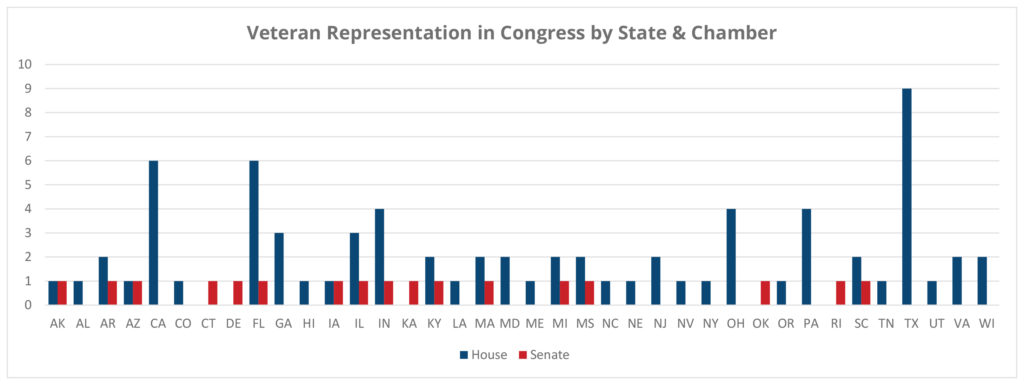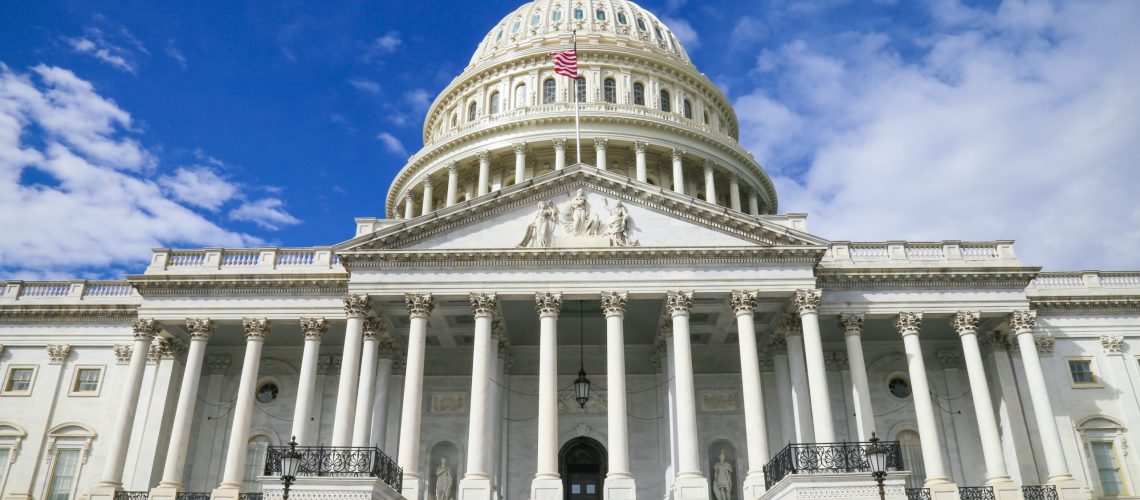On January 3, 2021, the 117th Congress of the United States convened for its first session. It followed a contentious election season in which control of the White House changed hands, from Republican incumbent, Donald Trump, to Democrat challenger and current President, Joe Biden. The election resulted in Democrats maintaining control of the House of Representatives, although by slimmer margins, and a dead 50/50 tie for control of the Senate.

Concerning Veterans in Congress, there was a slight reduction in Veterans elected in 2020, however we remain encouraged that more and more Veterans from the post-9/11 era are beginning to run for federal office. Of the 435 members of the House of Representatives, 75 members from both parties are Veterans, and of the 100 members of the Senate, 17 are as well. The following lists the current makeup of the 91 Veterans in Congress by party, state, and chamber:
Party Breakdown of Veterans in Congress by Party
- Republican: 53 House Representatives, 10 Senators
- Democrat: 21 House Representatives, 7 Senators
Veteran Representation in Congress by State & Chamber

As noted by Military Times, there are 12 states in the Union without a Veteran serving in their state’s delegation (Idaho, Missouri, Minnesota, Montana, New Hampshire, New Mexico, North Dakota, South Dakota, Vermont, Washington, West Virginia, Wyoming).Democrat Representative Gregorio Kilili Sablan is an honorable mention, serving as a delegate for the Northern Mariana Island territories, a US commonwealth.
Image Credit: Photo by Louis Velazquez on Unsplash
According to a poll by Gallup done in 2017, public trust in Congress was only 12%. Rarely do legislators reach across the aisle to work in the common interest of all Americans. Instead what we have witnessed over time is increasing and disastrous partisan brinkmanship which destabilizes our country on a regular basis. So, is the process broken or do the bureaucrats at the helm of our Congress bear the blame?


